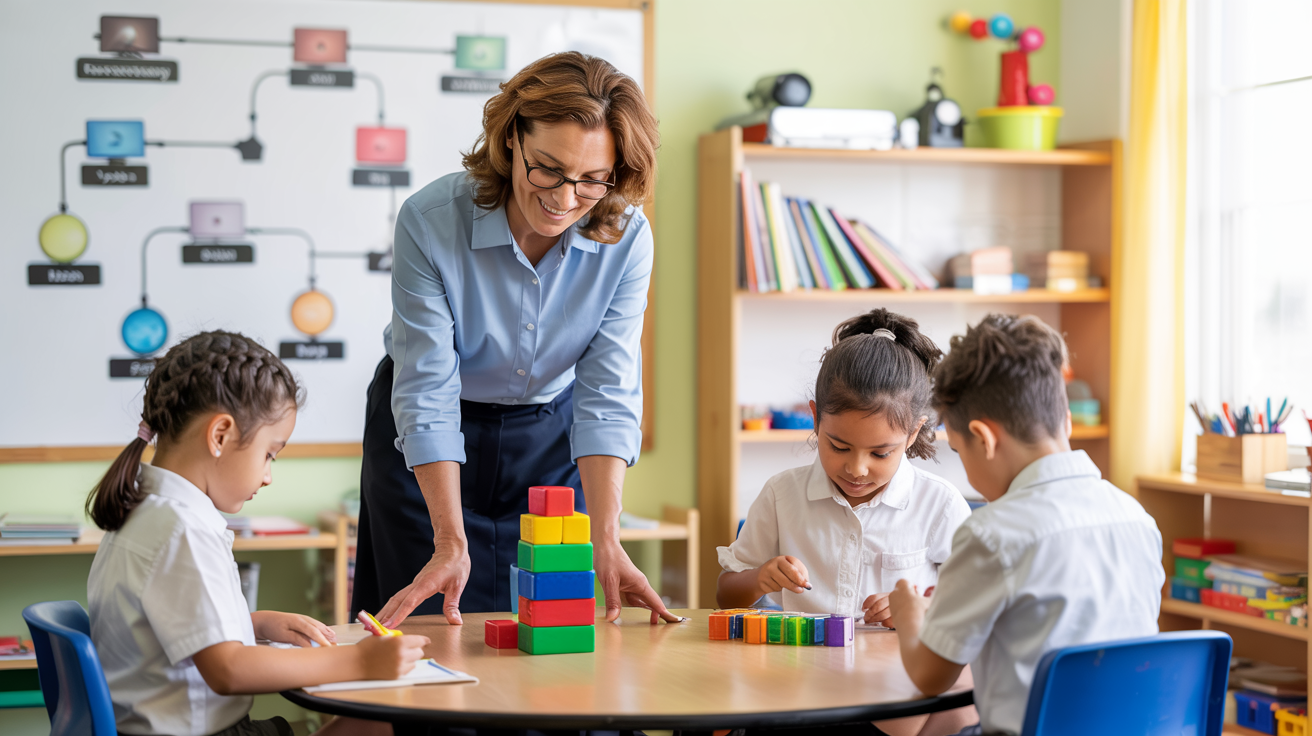Teachers often struggle with classroom management because they mix up rules vs procedures in the classroom. This common mistake leads to confusion and frustration for both educators and students alike.
Rules focus on behavior standards that affect the learning environment, while procedures show students how to complete tasks correctly.
Understanding this difference helps teachers create classrooms where students know what to expect and how to succeed.
With clear rules and well-taught procedures, teachers can spend less time correcting behavior and more time teaching. Students also gain confidence when they know exactly what is expected of them.
An exploration of the distinctions and practical applications of rules and procedures in classroom management will benefit those interested in finding the synergy between them.
Why are Rules and Procedures Important?
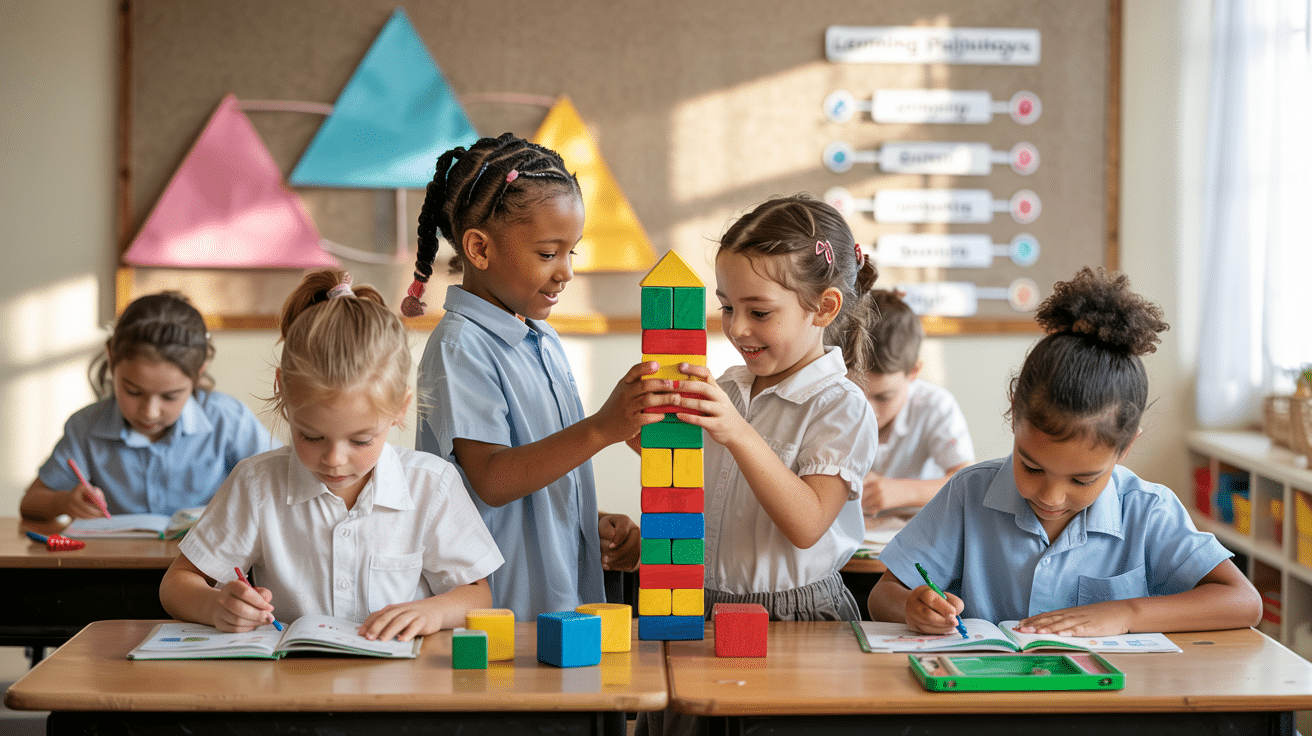
Rules and procedures form the foundation of an effective classroom management system. They help teachers create a stable learning environment where students can focus on their studies without confusion.
When students understand what is expected of them, they can act with more confidence and take ownership of their actions.
- Clear expectations: Rules and procedures tell students exactly what is expected of them in the classroom. When students know what they should and should not do, they feel more secure and can focus better on learning tasks.
- Time management: Well-established procedures help save class time that would otherwise be wasted. When students know how to hand in work, transition between activities, or get help, the classroom runs more smoothly.
- Reduced conflicts: Clear rules make it easier for teachers to handle behavior issues fairly. Students understand the reasons behind the rules and know what happens if they break them, which leads to fewer arguments.
- Classroom community: When everyone follows the same rules and procedures, it builds a sense of community. Students learn to work together and respect each other’s rights to learn in a safe space.
- Self control: Following rules and procedures helps students develop important self control skills. They learn to think before acting and understand how their behavior affects others in the classroom.
Understanding Rules Vs Procedures In the Classroom
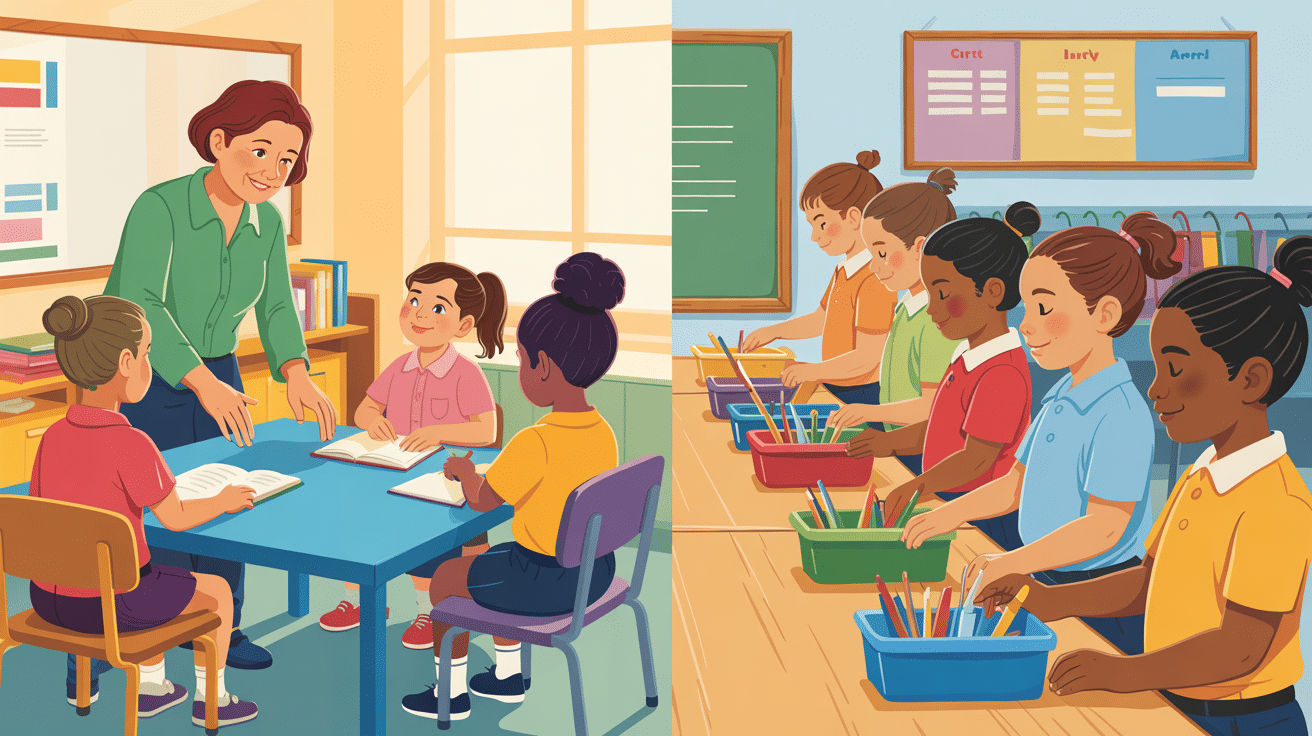
Understanding the precise differences between rules and procedures helps teachers use both tools effectively. While they work together to create an organized classroom, they serve distinct purposes and function in different ways.
Here is a simple breakdown of how rules and procedures differ from each other in key areas.
| Aspect | Rules | Procedures |
|---|---|---|
| Purpose | Rules set behavioral standards and protect student rights. They focus on what students can and cannot do. | Procedures show the correct way to complete tasks. They focus on how to do something efficiently. |
| Enforcement | Rules usually come with consequences when broken. Teachers enforce these consistently. | Procedures rarely have penalties. Teachers simply remind and reteach until students learn them. |
| Number | Effective classrooms typically have fewer rules (5 or fewer) that cover broad areas. | Classrooms need many procedures for all routine activities (20+ is common). |
| Timing | Rules are often established at the beginning of the year and remain consistent. | Procedures may be introduced gradually as new activities arise throughout the year. |
| Student input | Rules sometimes involve student discussion or input for buy-in. | Procedures are usually determined by the teacher based on efficiency and classroom needs. |
Creative Ways to Teach Classroom Procedures
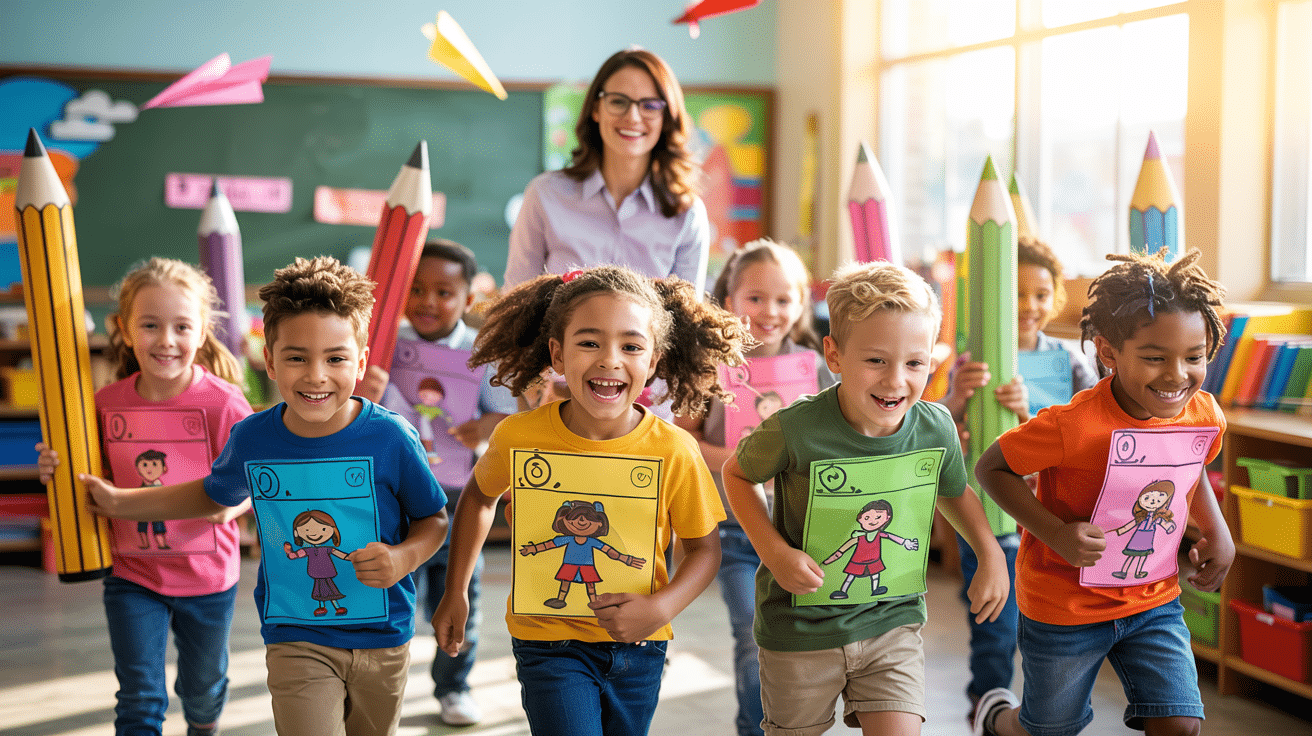
Teachers can make learning procedures fun and memorable instead of boring. These methods help students remember how to handle classroom routines without constant reminders.
Demonstration and Practice
Showing rather than just telling helps students grasp procedures more quickly. When teachers model exactly what they expect, students gain clarity on proper classroom routines.
- Have students practice right after watching the demonstration
- Ask volunteers to model both correct and incorrect ways
- Provide immediate feedback during practice sessions
- Start with simple procedures before teaching complex ones
Visual Aids
Visual reminders placed strategically around the classroom help students remember what to do without constant teacher prompting. These tools work especially well for younger students or those who need extra support.
- Create step-by-step picture guides for complex procedures
- Post simple flowcharts near areas where specific procedures happen
- Use color coding to mark materials and their storage locations
- Include both words and pictures to reach all learning styles
Procedure Games
Adding an element of fun to learning procedures increases student engagement and retention. Games make what could be boring rules feel exciting and worth remembering.
- Create a “Procedure of the Week” challenge with small rewards
- Design scavenger hunts where students find procedure examples
- Hold friendly competitions between table groups or teams
- Use music cues to signal transitions and time limits
Classroom Videos
Recording students demonstrating procedures creates powerful learning tools that can be used throughout the year. This approach also gives students ownership of classroom routines.
- Film short procedure tutorials starring students
- Watch videos during morning meetings as a refresher
- Create a procedure video library for new students
- Allow students to direct and film their own procedure demonstrations
How Teachers Can Enforce Classroom Rules
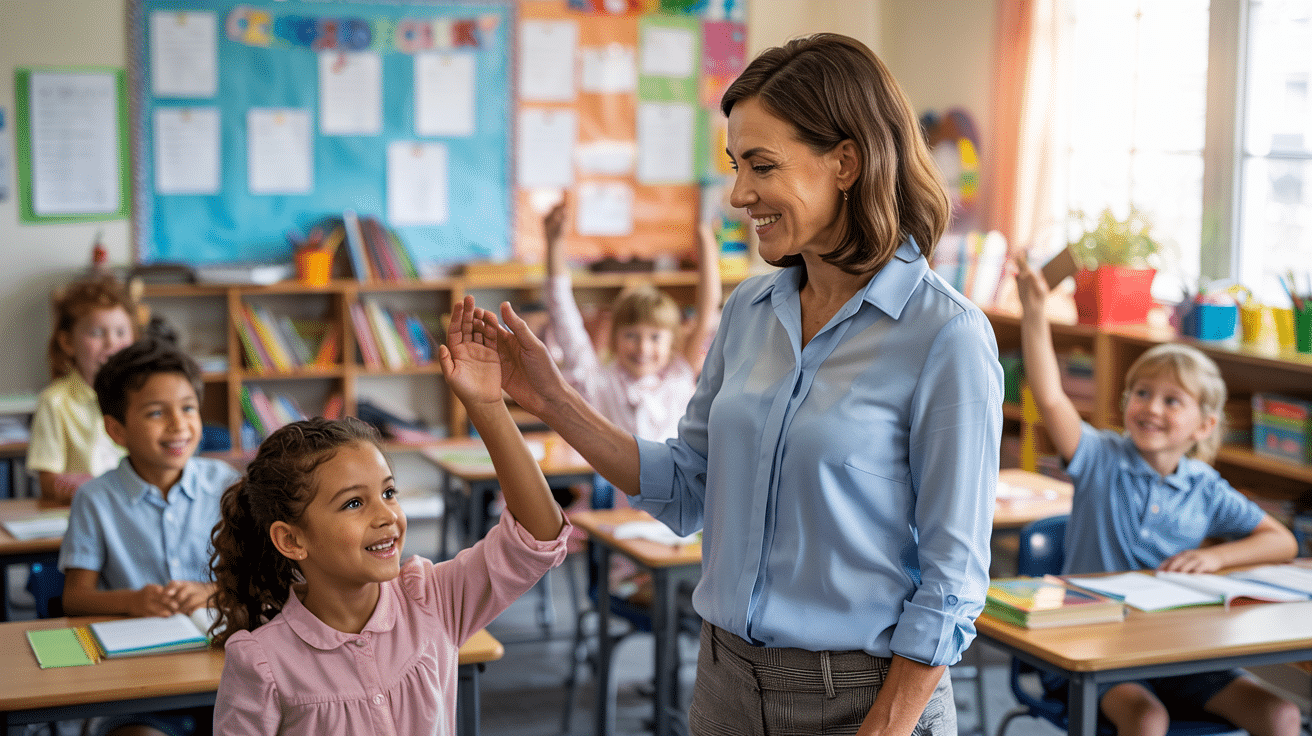
Enforcing classroom rules requires a thoughtful approach that balances firmness with understanding.
Effective teachers know that simply posting rules isn’t enough – they need a system to help students internalize and follow these guidelines.
The following steps show how skilled educators maintain order while creating a positive learning environment.
Step 1: Clear Communication
Teachers begin by explaining rules clearly and simply. They discuss what each rule means and why it matters.
Most teachers display rules prominently in the classroom and review them regularly during the first weeks of school.
Step 2: Consistent Reminders
Teachers provide gentle reminders about rules, especially when students might forget them.
They point out good examples when students follow rules correctly. This consistency helps students remember the rules without feeling criticized.
Step 3: Fair Consequences
When rules are broken, teachers apply consequences calmly and consistently. They make sure the consequence relates to the broken rule when possible.
Teachers speak privately with students about behavior concerns rather than calling them out publicly.
Step 4: Positive Reinforcement
Teachers recognize good behavior frequently. They use praise, class rewards, or special privileges to acknowledge students who follow rules well.
This positive approach motivates students more effectively than focusing on mistakes.
Step 5: Parent Partnerships
Teachers include parents in the rule enforcement process. They share classroom rules with families and update them when serious issues arise.
This teamwork between home and school helps students understand that rules matter in all settings.
Summing It Up
Understanding the differences between rules vs procedures in the classroom gives teachers powerful tools for effective management.
Rules create the foundation for respect and safety, while procedures smooth out daily operations. Together, they form a complete system that reduces confusion and promotes learning.
When teachers take time to teach both elements properly, students gain important life skills beyond academics. They learn responsibility, time management, and how to function within a community. These skills serve them well beyond their school years.
The most successful classrooms maintain a balance between these two management tools.
Neither rules nor procedures alone can create an optimal learning environment. It is their careful combination, consistently applied, that creates classrooms where both teachers and students can survive.

